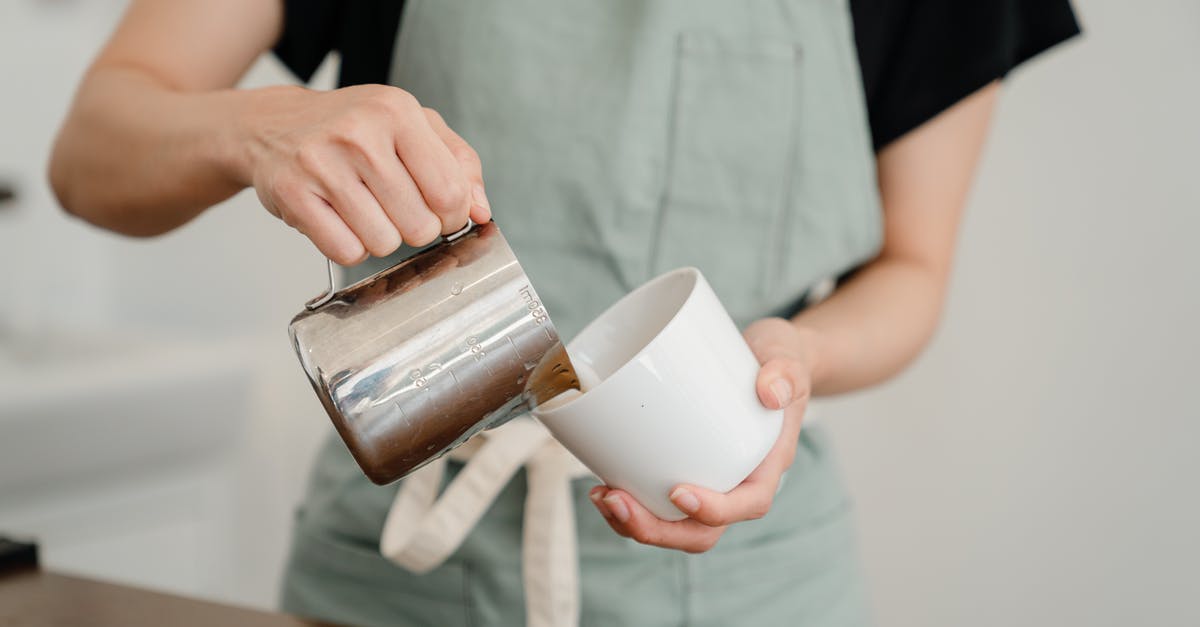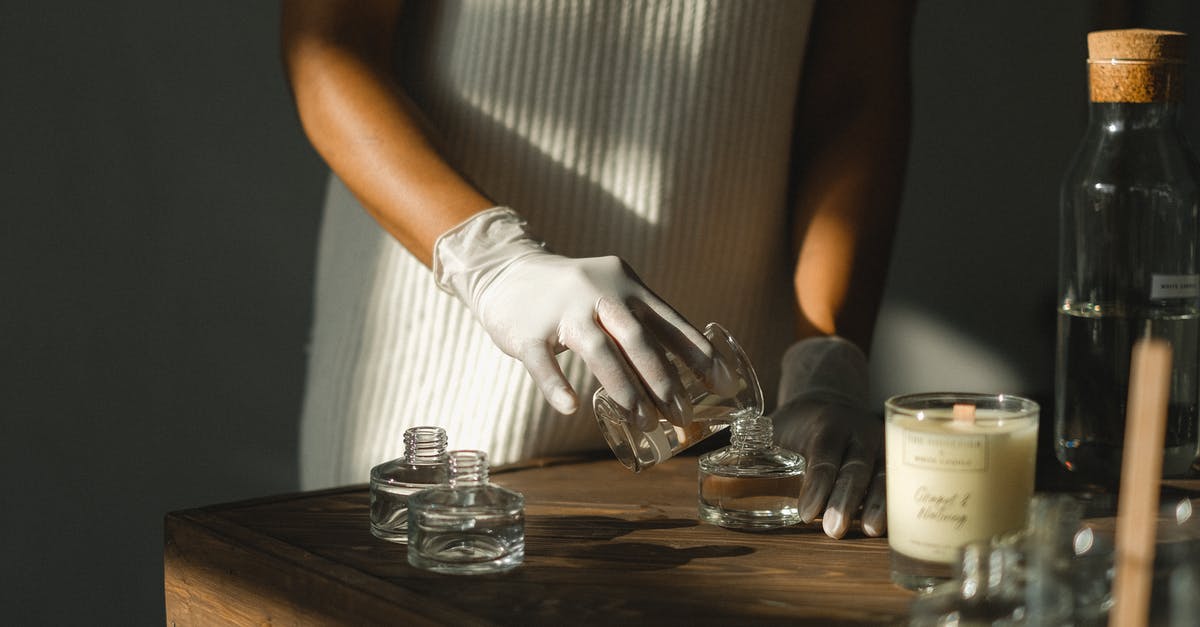How do I make a foam?

I'm making Lobster Sous Vide with Pain Perdu and Tomato Marmalade tonight. I wanted to serve it with a lobster bisque(y) foam. I was planning on mixing lobster broth, cream, and some of the butter used in cooking the lobster, heat it up. Use an emulsifying agent and throw it in my vita mix. But I've never made a foam before.
So some questions:
I have Lecithin and Mono/diglyceride from a set. It says they're both emulsifying agents. Which should I use? What's the difference?
What's the appropriate ratio of emulsifying agent to liquid? How does changing the ratio affect the foam?
Does temperature effect how the foam forms?
What consistency should my bisque be to make a good foam? Does it need to be thin, or will it work thick?
What else should I know before trying to make this?
Update: I really hoped that I could answer my own question today, but the foam was a complete failure. My Lecithin may be "off", it was kinda of sticky, not powdery at all. No idea what went wrong.
Best Answer
Disclaimer: I am not an expert on foams. I've made a couple before, successfully, but never anything like a lobster bisque foam. So I would advise any casual readers to do their own fact-checking and try this on a small scale - at least until somebody can verify it.
Now, onto the questions:
I have Lecithin and Mono/diglyceride from a set. It says they're both emulsifying agents. Which should I use? What's the difference?
First of all, what you want for a foam is a stabilizer, and emulsifiers and stabilizers are not the same thing. Personally, I have never heard of mono/diglyceride being used for a culinary foam. Some research suggests that it is actually an anti-foaming agent! Stick to the lecithin.
Note: For the sake of completeness, lecithin is also considered a foaming agent, which means it facilitates the foaming itself in addition to stabilizing it. This is especially important when making foams out of things that don't naturally foam, like teas or juices.
What's the appropriate ratio of emulsifying agent to liquid? How does changing the ratio affect the foam?
This page on culinary foam suggests starting with a 0.6% ratio, but most people (myself included) use a ratio of 1% - in other words, 1 g of lecithin for every 100 mL of liquid. See here, here, and here. The ratio is not quite as sensitive as some other hydrocolloids where you need to measure out sub-grams, but it is still important; too little and your foam won't hold at all (seems to be what happened to you), too much and you'll end up with soy-flavoured soap.
Note: When making a foam out of something that does not naturally foam, such as juice, you may need to up the ratio as high as 2%. Milk-based foams rely partially on the foaming ability of milk itself.
Does temperature effect how the foam forms?
Sort of. Actually, if you're making a milk-based foam then it's pretty much the same as just frothing the milk - i.e. for a cappuccino. The only difference is that you've added a stabilizing agent, so it will stay foamy. So basically you just need to keep it under 80° C or 175° F, otherwise it will burn. Lecithin can dissolve in cold water, so you really don't need to be very precise, but anecdotally, it's best if it's slightly warmed, say around 40° C (104° F).
What consistency should my bisque be to make a good foam? Does it need to be thin, or will it work thick?
You want a very thin consistency, close to the consistency of water, for the same reason that it's better to use skim milk for frothing and egg whites for meringue. Generally speaking, it's the proteins that are most active in creating culinary foams; large amounts of fat (such as in cream) can interfere with the foaming action and also add weight, which is not at all what you want in a foam.
I haven't made lobster bisque, but I believe it's very thick and made with cream - not a good candidate for foams. I looked at this Epicurious recipe which involves tomato paste, corn starch, and cream; if making a foam I think I would substitute a thin tomato sauce or juice, reduce or eliminate the corn starch, and use skim milk instead of cream. Remember that you're not trying to serve this bisque, you're using it in a foam.
What else should I know before trying to make this?
I don't have a Vitamix, and maybe it can do a lot of cool things that one can't do with an ordinary blender, but nevertheless, I've never heard of a culinary foam being made in an actual blender. A stick blender (AKA hand blender, immersion blender) is much more reliable for foaming.
Pictures about "How do I make a foam?"



How do you make foam with simple ingredients?
Soap Foam Recipe Making soap foam is really easy, simply pour one cup of water into a food processor and then add a squirt of dish soap. If you want to make coloured soap foam add a drop or two of food colouring at this stage. TIP: You need about one squirt of soap foam per cup of water, but this isn't exact.Can you make foam at home?
Mix 2 parts water to 1 part bubble bath. I wanted to make rainbow bubble foam so I went with 1/2 cup water + 1/4 cup bubble bath for each of my small batches. For color, I added a little food coloring then whip it with a hand mixer on med-high for one minute.Manufacturing of PU FOAM
More answers regarding how do I make a foam?
Answer 2
A few weeks ago, I tried this for the first time with a friend. We were making kiwi foam and it seemed to be a disaster even after adding >2% of lecithin. There was a little bit of foam and it was thicker than the liquid we started out with, but it wouldn't stick. We finally gave up and said "it tastes good, so we'll serve it as is and call it something else".
We put the bowl in the fridge.
A couple of hours later, when it was time to serve dessert, lo and behold, there was perfect separation of the foam and the liquid. The foam was really good. We just needed to wait a few hours for the liquid to separate out.
Answer 3
There are several ways to make foams, depending upon whether you want a hot or cold application. XANTHAN GUM can be used to replicate the binding effect usually provided by the fat of whipping cream so that it is now possible to create an incredibly tasty low-fat whipped cream. By adding 1 gr XANTHAN GUM to 1 cup of half-n-half and 1 cup of low fat milk and blending in a mixer, then pour into a whipper; charge with N2O gas; shake well and pipe out a low-fat whipped cream; add any flavors; strain particles and fibers.
AGAR AGAR will allow you to be able to serve warm or cold mousses as appetizers or side dishes. Make 2 cups warm sauce or 2 cups cold puree; add to a blender and slowly add the 2 gr AGAR AGAR; strain any particles and fibers. Place in sauce pot bring to a boil and gradually add cream, mix until homogeneous; for warm foams place into whipper; charge with N2O gas; shake well and pipe; for cold foams refrigerate until sauce congeals; re-blend; pour into culinary whipper; charge with N2O gas; shake well and pipe out. COLD SOLUBLE GELATIN will allow you to add an exquisite melt-in-the-mouth effect to your desserts! Place 2 cups warm or cold liquid in a blender and gradually incorporate 4 gr GELATIN; put in a pan on low heat, simmer do not boil; cool for cold sauce or keep warm for warm sauce; pour into culinary whipper; charge with N2O; shake well and pipe out.
Answer 4
Hi Iv been a professional chef for close to 15 years so hopefully I can shed some light here
Soya lecithin will only create a stable foam in water based liquids if you have any dairy present it won't create the desired effect for best results using soy lecithin I use a 1 teaspoon of lecithin powder per 100ml of liquid and make sure it's completely combined using an electric whisk or a blender once it's combined properly you'll know as it will begin to create foam
If your wanting to create a cold dairy based foam such as for a mousse you'll need either an espuma powder or an espessant for cold or hot respectively, both of which can be easily bought online, both of these work best using a cream charger and no2 (nitrous oxide) cartridges
Sources: Stack Exchange - This article follows the attribution requirements of Stack Exchange and is licensed under CC BY-SA 3.0.
Images: Ketut Subiyanto, Ketut Subiyanto, Yan Krukov, Anna Shvets
